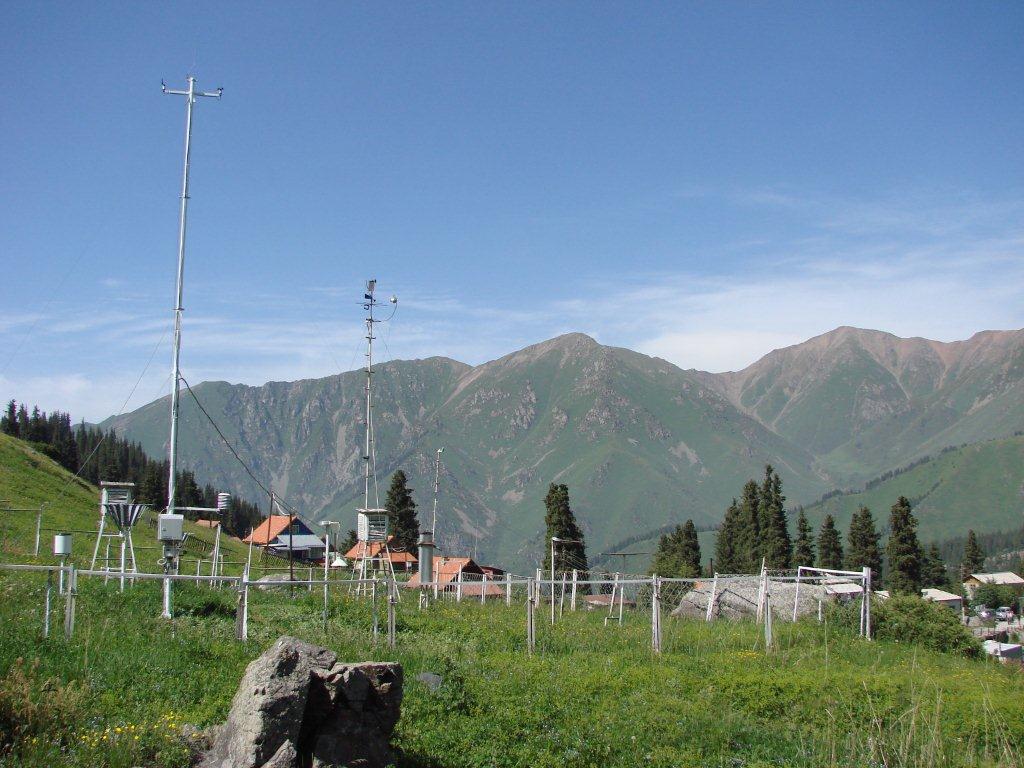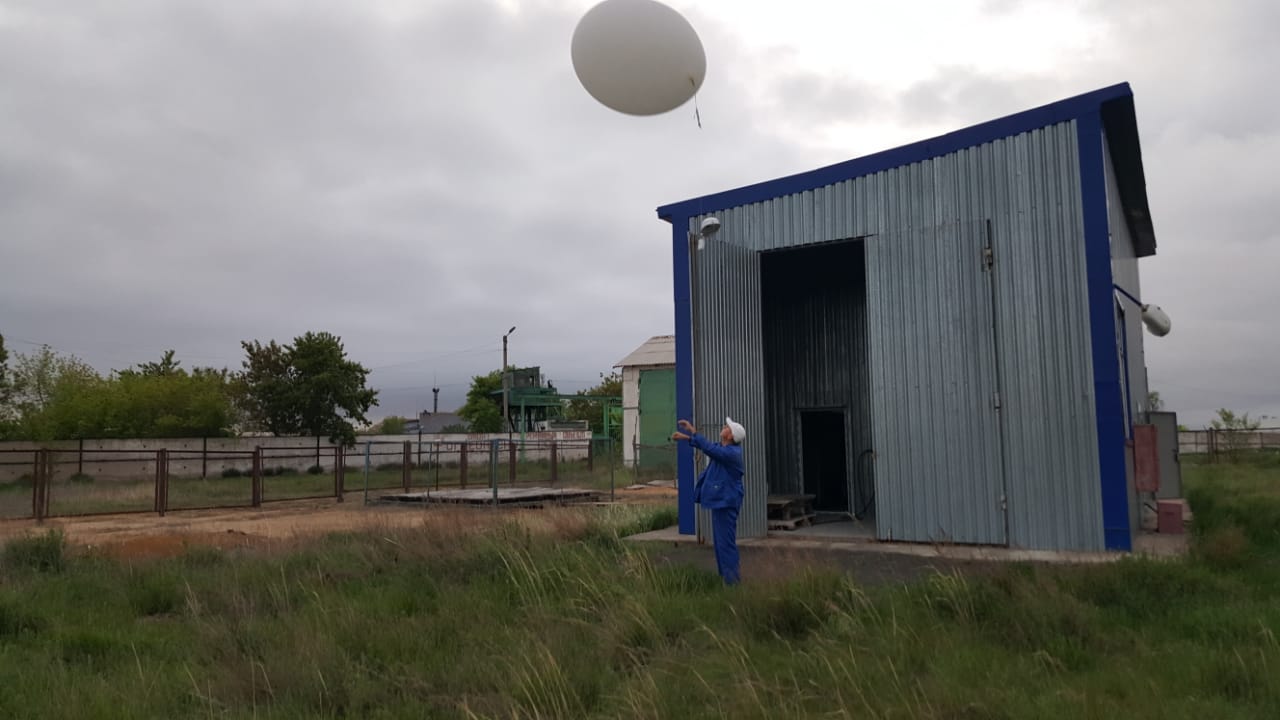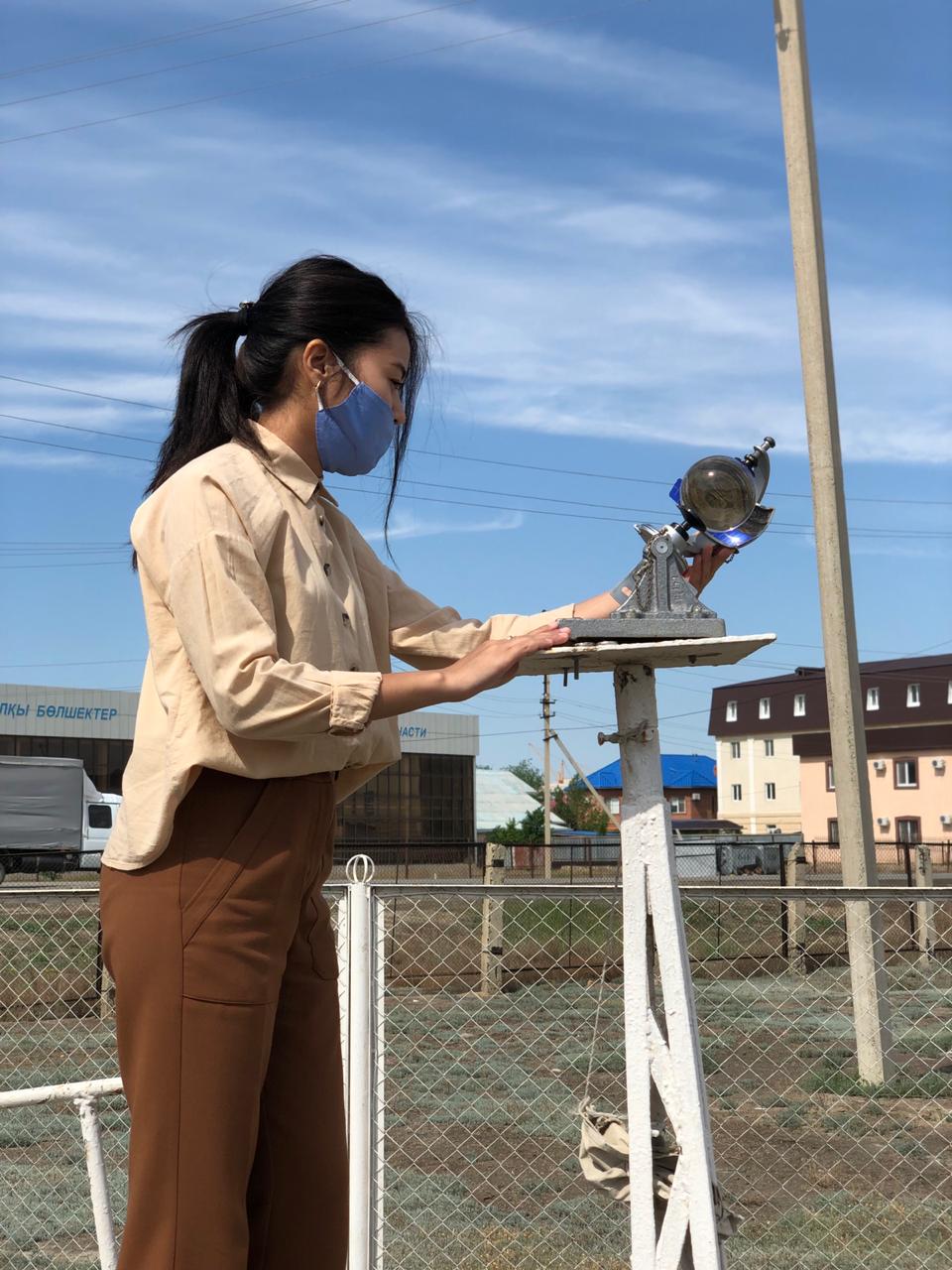The meteorological service is one of the main divisions of RSE "Kazhydromet", whose main task is to make observations.these observations are used for preparing real-time weather forecasts and warnings about adverse weather conditions, for climate research, in the current activities of economic sectors that depend on the weather for the purposes of hydrology and agricultural meteorology, and for conducting scientific research in the field of meteorology and climatology.
Meteorological monitoring of the Republic of Kazakhstan is carried out at:
1) 347 weather stations;
2) actinometric observations are carried out at 43 weather stations;
3) 9 aerological stations.
4) 5 weather stations conduct ozonometric observations.

Meteorological observations are carried out in 8 main synchronous modes for the following meteorological characteristics: air temperature and humidity,soil temperature (at the surface and at depths),atmospheric pressure,wind speed and direction,atmospheric phenomena (OJ and OHS),ice and frost events, precipitation quantity and intensity,snow cover (height, density, water supply), cloud cover (quantity, shape, height).
Data from automated weather stations is sent to the Central data collection server via cellular communication channels in Astana.
Data from all weather stations and automated weather stations are sent to the WMO regional center in Tashkent and to the WMO world data center (GCIS) in Moscow and to Offenbach (reserve center).
Actinometric observations actinometric observations are carried out at 13 weather stations for direct, scattered, total radiation 6 times a day in average solar time. Sensors for measuring total radiation are installed at 30 automatic weather stations.

Aerological observations are used from 9 aerological stations to build predictive models of baric formations (cyclones, anticyclones), to obtain information for predicting natural and dangerous weather events, as well as to monitor the state of the atmosphere at altitudes up to 30 km or more. Aerological observations are made 2 times a day.
Monitoring of the ozone layer (hereinafter referred to as OSO) is carried out at 5 meteorological stations. The results of the observation are transmitted to the Main geophysical Observatory. Voeikov, and then to the WMO world ozone center in Toronto, Canada, on the basis of which the ultraviolet radiation Bulletin is issued from may to October.
Meteorological monitoring is managed by the Department of meteorology, which is headed by the Director

The Department consists of 3 departments:
1. meteorological monitoring Department;
2. management of hydrometeorological supply, planning and reporting;
3. Department of climatology
The meteorological monitoring Department provides methodological guidance to the meteorological, actinometric, aerological and ozonometric networks. The Department collects, processes and analyzes information, ensures the unity of observation methods on the network, and monitors the status and operation of devices used in the meteorological network.
The hydrometeorological supply, planning and reporting Department monitors the timely provision of rations and solid fuel to the observation network, forms and coordinates meteorological observation plans, and generates reports on the implementation of activities in accordance with the goals and objectives of RSE "Kazhydromet" in the Megipr.
The Department of climatology manages climate data (collection, analysis and formation of a database of meteorological observations); forms and publishes reference books on the climate of Kazakhstan; processes climate and meteorological information for submission to government agencies and the public on request.



